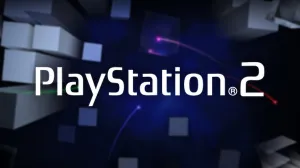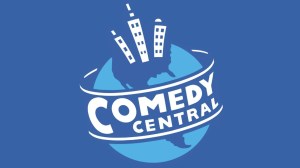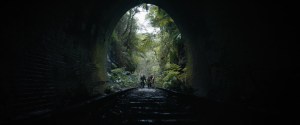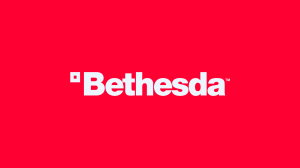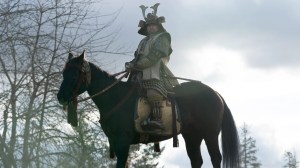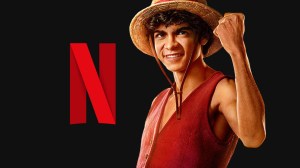When Rogue One: A Star Wars Story was officially announced by Disney, fans didn’t entirely know how to feel, as the first big-screen adventure that didn’t directly tie into the Skywalker Saga had just as much of a chance at being a massive hit as it did at being a dud. Making more than a billion dollars at the worldwide box office and earning 86% positive reviews from critics, Rogue One put all worries to bed, becoming a resounding success. What really perplexed audiences, however, was the fact that some of the more compelling sequences shown in promotional materials were entirely absent from the final product. Ever since, fans have wondered if the original version of the film could ever be released, but the bigger question is whether or not that version even needs to be released.
Videos by ComicBook.com
Godzilla filmmaker Gareth Edwards is the credited director of the film, from a script by Chris Weitz, with the concept itself being developed by John Knoll and Gary Whitta. In June of 2016, just a few months ahead of its December release, Rogue One earned reshoots that were largely helmed by Tony Gilroy, which were significant enough to score him a writing credit on the adventure. There’s no debate from either Edwards or Gilroy that these reshoots took place, as this process comes along with virtually every major studio production. Where things get a bit more contentious, however, are the reports about how significantly these reshoots impacted the overall structure of the movie.
In multiple trailers and in a sizzle reel crafted for Star Wars Celebration, audiences witnessed a number of compelling sequences. Ranging from Ben Mendelsohn’s Director Krennic crossing a muddy, blazing battlefield to Rebels running across a beach to Felicity Jones’s Jyn Erso being directly confronted by a TIE Fighter, Rogue One promised a lot of thrilling encounters. Many of these, though, were absent from the movie, and while trailers often depict slightly different shots or bits of dialogue, the differences between trailers and the final film feel a lot more substantial. As recent as 2023, Edwards addressed the reports of the reshoots, with Gilroy addressing the situation earlier this month. All this to say, even if the cast, crew, and Lucasfilm have offered different perspectives on the situation, no reports have emerged that discredit Edwards’s contributions to the project, seemingly refuting the notion that he had to relinquish control to the studio.
Filmmakers have parted ways from projects in a variety of ways, whether they be acrimoniously or with hostility. Even specifically in the galaxy far, far away, Rogue One was just the first of multiple instances in which creatives left a project, whether they were before a project started shooting (like with Colin Trevorrow leaving Star Wars: Episode IX) or when principal photography had nearly been completed (like with Chris Miller and Phil Lord on Solo: A Star Wars Story). Over at DC, Zack Snyder stepped away from Justice League due to a personal tragedy, leading to Joss Whedon completing filming, resulting in a critically panned experience. Similarly, David Ayer directed Suicide Squad and, while that film was also critically panned, he has been attempting to find a way to release his original vision of the experience for nearly a decade.
[RELATED – Rogue One Director Gareth Edwards Breaks Silence on Reshoot Rumors and Tony Gilroy Controversy]
With Solo, Justice League, and Suicide Squad, there’s no argument about how studio interference can significantly hamper a production. After years of Snyder teasing fans about his original Justice League, he was not only offered the chance to release his original vision on Max, but he even had the chance to film new sequences. Many devout DC fans praised the four-hour epic, yet Zack Snyder’s Justice League still only sits at 71% positive reviews from critics. This is a significant improvement over the theatrical cut’s 39% positive, but it still wasn’t the game-changing, resounding success some DC fanatics anticipated it would be. In this sense, while studio interference has proven to be detrimental in many instances, there are plenty of instances in which a Director’s Cut isn’t especially superior to a theatrical release.
Even if Zack Snyder’s Justice League somewhat proves that Director’s Cuts can be better than a theatrical release, one major thing that sets Rogue One apart is the entire origin of the project. Having worked on both the 1997 Star Wars Special Edition releases, as well as the prequel films, John Knoll has a deep connection with both Star Wars and George Lucas himself. The filmmaker then enlisted Gary Whitta’s assistance, before Chris Weitz turned that concept into a script, with Edwards then directing, before Gilroy helmed reshoots. Not to dismiss the talents or contributions Edwards made to the film, but from its inception, Rogue One was clearly a collaborative effort and there’s no distinct way to delineate who had the biggest impact on the final product.
From Peter Jackson’s The Lord of the Rings trilogy to Ridley Scott’s Kingdom of Heaven to James Cameron’s Aliens, many directors have had the opportunity to release their original visions of a movie to audiences eventually. In these instances, though, this has meant much longer versions of what was seen in theaters, with some audiences preferring the more condensed versions. Even filmmakers like Scott and Francis Ford Coppola have revisited their films Blade Runner and Apocalypse Now, respectively, to release not only Director’s Cuts, but also make subsequent revisions. In some cases, some fans have even argued that a Director’s Cut can make a film worse, as was the case with Richard Kelly’s Donnie Darko, which many argue offers answers to the questions that the theatrical release made so mysterious. The more chances a filmmaker has to revisit their movie, the more likely it is that these changes don’t improve the experience.
One of the more fascinating elements about the production of Rogue One is that, in the years since the movie was released, no major details about how different the story was have really emerged. Given that none of the characters in Rogue One showed up in later adventures, it seems likely that the structure of the film would always be about a group of Rebels stealing the plans for the Death Star and they ultimately sacrifice themselves to carry out their mission. Whether earlier explorations of this trajectory were superior to what we ultimately got is something we could never know, though based on how riveting Rogue One: A Star Wars Story ended up being, fans should let go of their desires to unearth something that could be far worse and damage the film’s legacy.
It’s always a difficult situation to see a filmmaker have their vision compromised due to an interfering studio, especially as social media has allowed such creatives to voice their concerns and even offer glimpses of things absent from a theatrical release. Yet, in the case of Rogue One, the movie we got was both a critical and financial success, going on to spawn two seasons of the riveting Star Wars: Andor, with the concept being a collaborative development throughout the whole process, as opposed to Garth Edwards being the singular creative voice behind it. Fans will likely always wonder what that original Rogue One looked like, but we’re better off celebrating the gripping story we were ultimately given.
Would you like to see a Director’s Cut of Rogue One: A Star Wars Story? Let us know in the comments below or contact Patrick Cavanaugh directly on Twitter or on Instagram to talk all things Star Wars and horror!

